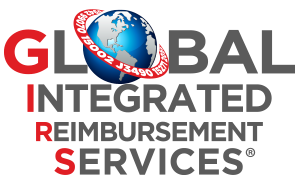Federal healthcare programs are focusing increasingly on reducing prescription drug spending for the government programs as well as patients. The Centers for Medicare and Medicaid (CMS) pays for prescriptions under programs, including Medicare Part B, Medicare Part D, and Medicaid. Although generic drug competition has generated significant Part D program savings, there are significant savings that remain to be realized by further aligning incentives for generic substitution.
On July 23, 2018, the Department of Health and Human Services, (HHS) released a report regarding the potential for savings under Medicare Part D if generic drugs were increasingly dispensed instead of brand name drugs. The study shows that, in 2016, if therapeutically equivalent drugs were prescribed, the Part D program would have realized savings of almost $3 billion. In the report, the HHS has presented its findings and made recommendations to remove barriers for the use of generics and cost-sharing incentives to increase generic substitution.
The HHS report shows that in 2016: 1) The Part D plans reimbursed more than 600 brand name drugs although generic drugs were available; 2) Brand name and generic drug spending both totaled approximately $43 billion not accounting for pharmacy rebates; 3) Substituting multiple source brands with generics would have saved the Part D program and its beneficiaries $2.8 billion in 2016; 4) A small number of brand-name drugs were responsible for a large amount of the program spending. The top 10 multiple source drugs dispensed in 2016 that cost the program the most are: Nexium®, Gleevec®, Unithroid®, Copaxone®, Crestor®, Lipitor®, Toprol XL®, Xenazine®, Plaquenil®, and Lovenox®. Nexium® and Crestor® showed the greatest potential for program savings with generic substitution.
CMS has made several recommendations to further realize cost savings for the Part D program including facilitating easier entry of generic in the market. Certain low-cost generic drugs will be allowed to be substituted onto plan formularies at any point during the year, so beneficiaries immediately benefit and have lower cost sharing.
Generic drug substitution will also be increased using cost-sharing incentives. CMS also developed tools for drug pricing transparency tools to better educate patients to access more affordable drugs.
The access to biosimilars and generics has also expanded with the implementation of a final rule in April of 2018.
There also will be increasing competition among plans by removing the requirement that certain Part D plans have to “meaningfully differ” from each other, making more plan options available.
GIRS tracks the payer market trends for our clients and assists to develop market access strategies for favorable formulary placement for generics and biosimilars, as well as brand name drugs. Do you have a drug for which you are seeking favorable formulary placement? Are you the manufacturer of a generic drug, a biosimilar, or a brand name drug and need to educate the payer of your drug’s value proposition or to negotiate pricing and formulary placement? Contact us by email or call us toll-free at 1-844-514-4477 so that we can help you with your market access strategies and patients access! Also, please follow our LinkedIn Company Page for company news and information on reimbursement trends, milestones, and achievements.
Sources:
Savings Available Under Full Generic Substitution of Multiple Source Brand Drugs in Medicare Part D
https://bit.ly/2MQ1BWd
CMS lowers the cost of prescription drugs for Medicare beneficiaries
https://go.cms.gov/2Mm0qla
Generic Drugs Could Have Saved $3B for Medicare Part D Program
https://bit.ly/2nKrWug
